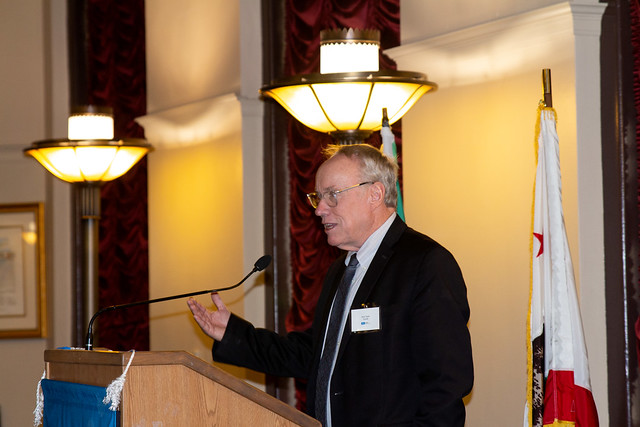By Colleen Callahan
The two San Pedro Bay ports — Los Angeles and Long Beach — form the largest container port complex in North America. While an important economic engine for Southern California, port-related activity is one of the largest contributors to air pollution in a region that regularly violates air quality standards.
Concerned about the public health and climate impacts of drayage trucking — which moves cargo from the ports to train yards, warehouses and distribution centers — the mayors of Los Angeles and Long Beach set a goal to transition the fleet to 100% zero-emission vehicles by 2035. A new report from the UCLA Luskin Center for Innovation, however, finds that an accelerated transition starting in the 2020s could be both feasible and advantageous.
The UCLA researchers analyzed the significant challenges and opportunities of replacing diesel drayage trucks with zero-emission trucks, specifically battery electric trucks, beginning in the 2020s. One advantage of an earlier transition is a quicker reduction in tailpipe emissions, they found. Unlike current diesel trucks, zero-emission trucks do not directly emit any regulated pollutants and can be fueled by renewable energy sources like wind or solar.
However, there are barriers to adoption of battery electric zero-emission trucks by the drayage industry. The UCLA report finds that current constraints include nascent technology not yet proven in drayage operations; limited vehicle range; high capital costs for trucks and charging infrastructure; uncertainty about which entity would shoulder the upfront costs; and space and time constraints for vehicle charging.
“Despite these challenges, we conclude that there is significant potential for zero-emission trucks to be used in drayage service,” said James Di Filippo, the lead researcher on the UCLA study. “Operationally, the range of early-state battery electric trucks is suitable for most drayage needs at the ports.”
The technology is advancing quickly. One manufacturer already has a zero-emission battery electric truck on the market, while five other leading manufacturers plan to do so by 2021. New entrants into the battery electric truck market expect to bring longer ranges and lower costs.
“We made a surprising finding: When incorporating incentives and low-carbon fuel credits, the total cost of ownership for a battery electric truck is less than near-zero-emission natural gas trucks,” Di Filippo said. “Even more surprising is that battery electric trucks can even be less expensive than used diesel trucks. This supports our finding that, even in the short and medium term, there is opportunity to electrify a meaningful portion of the drayage fleet at the ports.”
The Clean Trucks Program, adopted by the two ports in 2007, successfully spurred the replacement of the oldest, dirtiest diesel trucks in the fleet with cleaner diesel and natural gas models. UCLA researchers expect another nearly complete turnover of the drayage fleet in the 2020s. This presents a tremendous opportunity to transition to zero-emission trucks.
As demonstrated by the 2007 program, the strongest lever in the ports’ policy toolbox is the ability to assess differentiated fees to trucks entering the ports based on compliance with emission standards. The ports’ new clean truck program is set to differentiate between near-zero-emission trucks and zero-emission trucks by 2035. However, additional incentives to switch to zero-emission trucks from the start of the program could support a transition to the cleanest trucks sooner, the researchers concluded.
A swift move to zero-emission trucks could avoid the expense and disruption of two sharp technology transitions — one to near-zero in the 2020s and then to zero-emission in the 2030s. Meanwhile, early adopters could take advantage of current generous state and regional incentives for zero-emission trucks that make battery electric trucks less expensive to own and operate than all alternatives.
The UCLA report analyzed other options that the ports could pursue, including investing in technology that allows electric trucks to specialize in routes that suit their range. It also recommends that the ports collaborate with stakeholders — such as utilities and air regulators — to coordinate a wraparound strategy that provides technical assistance to trucking companies and drivers.
Other recommendations target incentives adopted by utilities and air quality agencies, which the researchers said could be updated to meet evolving needs.
The report by the Luskin Center for Innovation, which unites UCLA scholars and civic leaders to solve environmental challenges, was made possible by two separate funding sources: a partnership grant from California’s Strategic Growth Council, and members of the Trade, Health and Environmental Impact Project (THE Impact Project).

